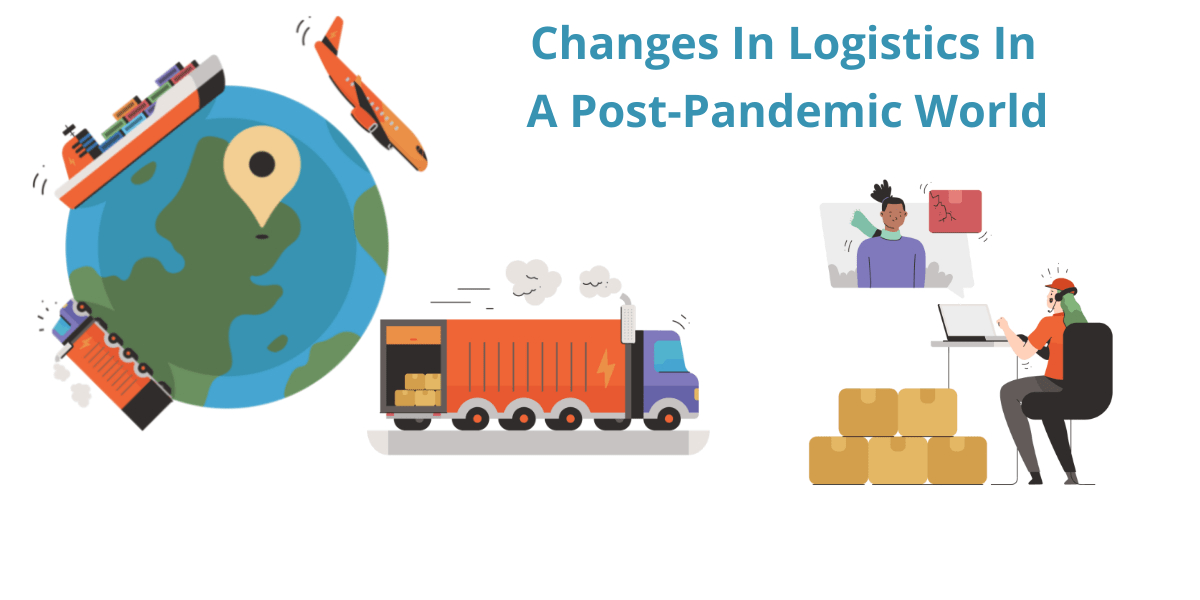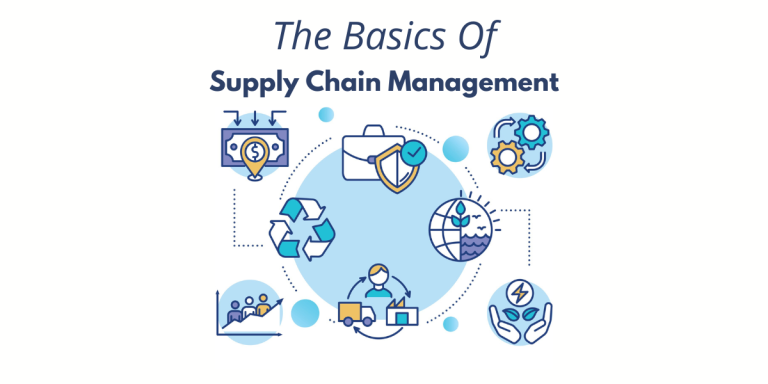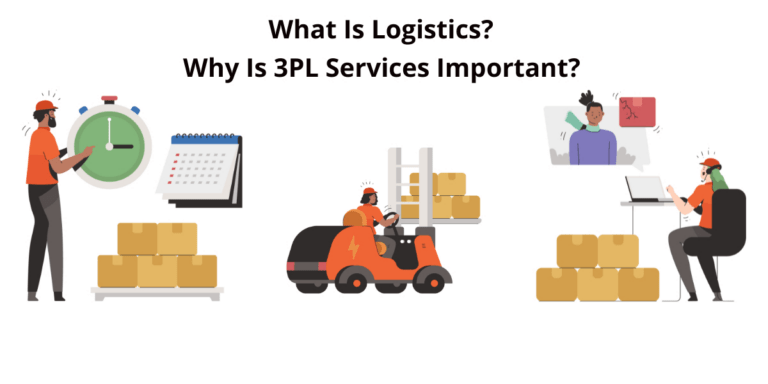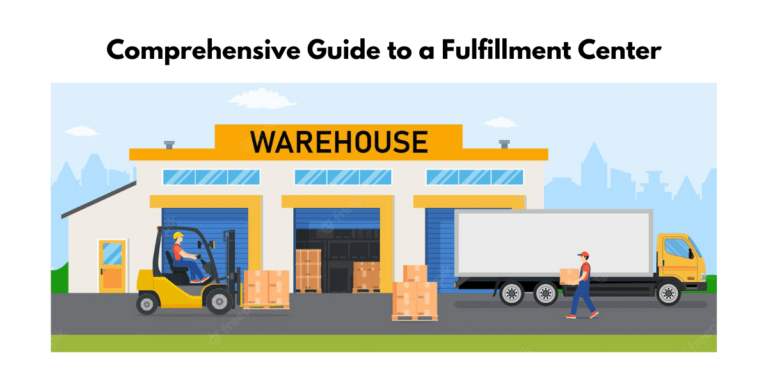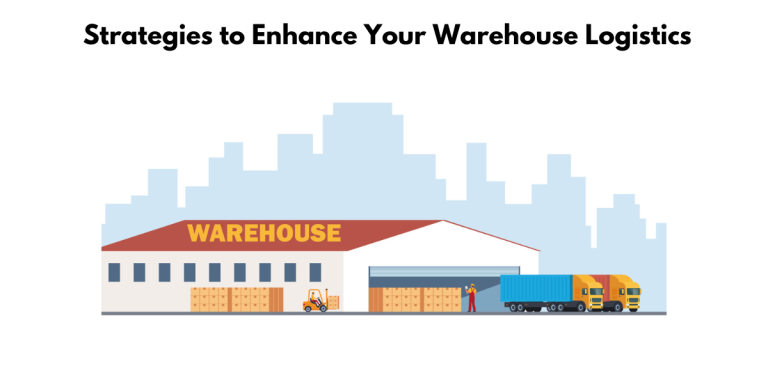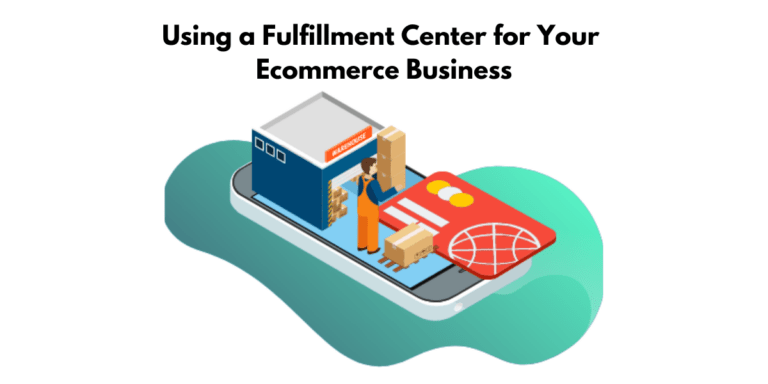Transportation Logistics: 8 things that changed in the supply chain industry post-pandemic
How does transportation logistics adapt in a post-pandemic world
The COVID-19 pandemic has caused 58% of retail workers to be unable to continue doing their jobs as normal.
Brick-and-mortar locations closed doors in 2020 due to low sales, while next-day free shipping changes were introduced.
Retailers are not only affected by pandemics, but they also have to be proactive and think ahead to succeed.
Supply chains must also be evaluated for efficiency now and in 2021, as supply shocks occur more often than ever.
This is because retailers need to rethink their strategies for long-term success with the changing future of logistics, which will require an adaptation process.
Risk and contingency planning are more important than ever in a post-pandemic world.
Many of the reasons supply chains suffered (including lack of supply, loss of staff, and inventory bottlenecks) could have been avoided or mitigated.
Finally, it’s crucial to consider how you deploy your inventory to allow for optimal servicing of customers while mitigating situations where backup stock levels aren’t available.
Companies must recalibrate their logistics processes to mitigate risk in a post-pandemic world.
They’re now looking for 3PL providers who can provide last-mile delivery and keep products on time and within budget during volatile market conditions.
The logistics industry is in a constant state of change.
There are innovations, more efficiency and transparency requirements, and the need to keep up with fast-paced global markets.
To adapt quickly, enough companies must recalibrate their logistics strategies to be successful while meeting these constantly changing needs.
The last-mile carriers have had to adapt to incredible stress on their capacity and ability to maintain the flow of goods.
However, with decentralized nodes, it is possible for a more efficient delivery time even in this post-pandemic world.
When a pandemic hit, the focus shifted from working to what could work better.
This led to companies recalibrating their logistics and taking in new strategies that would be more cost-effective and efficient than ever before.
In addition, they also recognized that it’s important for all aspects of business operations to adjust because one sector or department can’t do everything on its own.
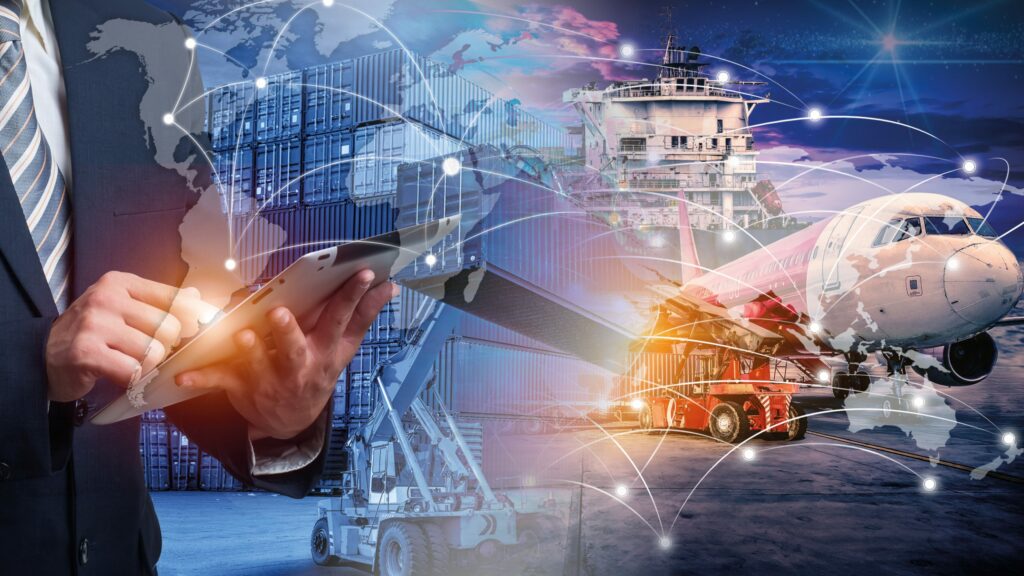
What is logistics?
Logistics is the process of planning, organizing, and executing the efficient and effective transportation and storage of goods, logistic services, and information from the source to the consumer.
It is an integral component of the supply chain and involves proactive procedures to safely and efficiently move products from manufacturers to sellers and up to the end users.
Logistics also covers material sourcing, warehouse receiving, product storage, inventory managing, fulfilling orders, packaging, shipping, delivery, distribution, and more.
In addition to transportation, effective logistics management requires proper planning, automation, team building, warehouse management, and the latest technology and innovative approaches.
Here are some components of logistics:
- Transport and logistics
- Warehouse receiving
- Product storage
- Inventory managing
- Fulfilling orders
- Packaging
- Shipping
- Delivery
- Reverse logistics
- Warehouse management
What is the difference between transportation and logistics?
The difference between transportation and logistics is the movement of goods from one location to another.
While logistics is the management of the inward and outward transportation of goods from the manufacturer to the end user.
Logistics involves planning and strategizing, while transportation is executing the plan.
Logistics also deals with packaging, containerization, documentation, insurance, storage, importing and exporting regulations, freight claims management, and working and collaborating with other executives in the supply chain.
In short, logistics covers much more than simply transportation.
Why is logistics important?
Logistics is an important part of any business and integral to any supply chain’s success.
Logistics helps to increase efficiency, lower costs, improve production turnout, enhance inventory management, and prevent disruption in the supply chain.
Proper planning, automation, valuing relationships, warehouse management, and using the latest technology and innovative approaches are all key elements to ensure effective logistics management.
Logistics also involves obtaining, producing, and distributing materials and products of the right qualities to an end user, managing vendors and partners, and mitigating risk.
Logistics is necessary for businesses to stay competitive and to be able to provide quality customer service and satisfaction.
Here are the benefits of the logistics:
- Increases efficiency and lowers costs
- Improves production turnout
- Enhances inventory management
- Prevents disruption in the supply chain
- Improves customer experience and strengthens industry reputation
- Necessary for proper planning
- Automation increases efficiency
- Value relationships and a reliable team
- Effective warehouse management
- Analysis, feedback, and measurement
- Adaptation of the latest technology and innovative approaches
To what extent should our strategy be logistics-oriented?
The ability to adapt logistics programs to support ongoing corporate strategies is important.
However, the need to incorporate logistics into the design of business operating strategies on a continuing long-term basis has been overlooked by many organizations.

8 things that changed in the logistics industry post-pandemic
The transport and logistics industry is one of the world’s most crucial and complex industries.
Over the past year, the COVID-19 pandemic has brought unprecedented challenges to the industry, impacting everything from supply chains to customer demands.
Despite the setbacks, the industry is resilient and has adapted to the changing landscape.
Here, we’ll explore 8 key things that have changed in the logistics industry post-pandemic.
1. Outbreak of viral diseases
The outbreak of viral diseases, such as the Covid-19 pandemic, has significantly impacted the logistics industry.
The logistics industry had to quickly adapt to changing customer expectations, such as fast delivery, easy tracking, and direct communication with delivery drivers.
Additionally, businesses are increasingly being pressured to demonstrate sustainable practices, such as:
- reducing greenhouse gas and carbon emissions
- utilizing alternative fuels
- replacing engines for better performance
The logistics industry is investing in tools that help monitor, track, and inspect processes and help meet market needs regarding inventory levels and distributions, picking, and order-fulfillment technology.
2. Shippers and carriers utilizing the same platform
In the post-pandemic world, shippers and carriers utilize the Uber Freight Platform to reduce downtime and improve logistics service levels.
This platform offers instant quotes, real-time tracking, and 24/7 access to trusted carriers to help streamline operations.
Uber Freight also provides an all-in-one solution to manage freight movements that are flexible, efficient, and dynamically in tune with businesses.
With the technology and expertise to provide instant quotes, transparent pricing, actionable insights, and optimization strategies, the platform provides shippers and carriers the tools to deliver for their customers.
3. Increased awareness of pandemics
The supply chain industry can increase awareness of pandemics by utilizing tools that can help monitor, track, and inspect processes to ensure that every step in operation is done efficiently and effectively.
Logistic companies can also implement strategies to observe business sustainability, such as utilizing alternative fuels, replacing engines for better performance, or tracking and properly reporting emissions.
4. Need for reverse logistics
Reverse logistics is necessary to effectively manage product returns through e-commerce.
In an increasingly digital world, the exponential growth in e-commerce has drastically increased companies’ need for expertise in reverse logistics and returns handling.
This includes having adequate space to store products and proper processes for handling returns efficiently.
Additionally, transportation and logistics companies must keep up with consumer expectations, such as fast delivery, easy tracking, and direct communication with delivery drivers.
Optimizing transport and logistics can decrease the following:
- costs
- improve production
- manage inventory
- prevent disruption in the supply chain
Thus improving customer experience and helping companies maintain a good reputation.
Implementing sustainable practices and utilizing tools to monitor processes can also help logistics businesses become more efficient.
Here are the benefits of reverse logistics:
- Increases efficiency by enabling businesses to spot errors and discrepancies in the supply chain.
- Lowers costs by avoiding unnecessary purchases and eliminating unproductive activities.
- Improves production turnout by streamlining operations and reducing downtime.
- Enhances inventory management by preventing material stockout and material overstock, avoiding product damage, and enabling businesses to manage inventory more efficiently.
- Prevents disruption in the supply chain by spotting inefficiencies and addressing issues before they cause disruption.

5. Increased integration of systems and services
The supply chain industry has been increasing the integration of systems and services to meet customer demands better and improve efficiency.
This includes utilizing alternative fuels, replacing engines for better performance, or tracking and properly reporting emissions to be more sustainable.
Companies also utilize tools such as Warehouse Management Systems (WMS) and Transportation Management Systems (TMS) to better manage inventory and observe business sustainability.
Additionally, businesses are optimizing their transportation and logistics networks to meet their customers’ SLAs while preventing disruption in the supply chain.
This helps improve customer experience, increase efficiency, lower costs, improve production turnout, and enhance inventory management.
6. Increase in local-to-local trade
The pandemic significantly impacted local-to-local trade, with many businesses closing due to reduced demand and disruption to supply chains.
The transport and logistics industry experienced setbacks caused by the pandemic due to reduced demand and the conflicts between major oil and gas producers, leading to rising fuel prices.
Big retail services drastically changed how customers experience product delivery, increasing demand for fast, tracked, and direct delivery services.
This further pressured transportation and logistics companies to keep up with customer expectations.
While facing a historic increase of 80,000 truck driver shortage in 2021 caused by the pandemic, the profession is demanding, stressful, and lonely.
To combat the driver shortage, US congress introduced a bill to attract and retain new drivers through short-term, fast, and straightforward incentives.
Here are some of the ways local-to-local trade changed post-pandemic:
- Utilizing alternative fuels to reduce greenhouse gas and carbon emission.
- Replacing engines for better performance and to promote sustainability.
- Implementing the best industry practices to meet customer demands.
- Adopting new tools and technologies to automate processes efficiently and effectively.
- Utilizing freight, NFSP, and Supply Chain management partners to move cargo quickly, reliably, and at a competitive price.
- Enhancing tracking systems and direct communication with delivery drivers.
- Integrating inventory levels and distributions, selecting picking and order-fulfillment technology, and helping to integrate or set up on-demand warehousing.
7. Need for intermodal transportation
Intermodal transportation uses multiple modes of transport (such as rail, road, sea, air, and pipeline) to move goods and services.
This method of transportation allows for cost-effective transport and flexibility, as it requires the coordination of different transportation networks to ensure the timely and efficient delivery of cargo.
Intermodal transportation is often used in logistics, as it allows for smoother and more cost-effective delivery of goods and more efficient use of resources.
The cargo is loaded onto one type of container, which can then be moved across different modes of transportation without having to be unloaded.
This allows for faster delivery, increased safety of goods, and more efficient tracking and tracing due to standardized containers.
8. Increased focus on sustainability
In the wake of the pandemic, logistics and transportation companies have been forced to reevaluate their practices to comply with the growing demand for more sustainable business operations.
The financial commitment required to implement such strategies is a key challenge in tackling this issue.
Companies are looking at ways to utilize alternative fuels, replace engines for better performance, or even track and properly report emissions.
Additionally, they can use tools to monitor, track, and inspect processes to ensure their operations are conducted efficiently and effectively.
The future of logistics sustainability post-pandemic will depend on the success of integrated strategies that aim to reduce greenhouse gas and carbon emissions.
The IFC’s report on the pandemic’s effects on the industry has highlighted the need for increased supply chain resilience and improved environmental sustainability.
Real-world applications and advanced tools are also essential for supply chain optimization.
Furthermore, developing competitive facility location models and data collection initiatives will help better understand how to mitigate food insecurity in emerging countries.
Overall, logistics and transportation management has evolved rapidly in recent years and will continue to do so as companies strive to meet the demands of a more sustainable world.

What are the 3 types of logistics?
Logistics is important in moving goods and services from the source to their destination.
It is a complex process involving the coordination of many different activities that must be managed to ensure that goods arrive at their destination in a timely and efficient manner.
The three main types of logistics are operations management, vehicle and fleet management, and infrastructure administration.
Operations management focuses on organizing processes to produce and deliver goods and services.
Vehicle and fleet management focuses on coordinating delivery vehicles for maximum efficiency.
Finally, infrastructure administration focuses on securing all infrastructure involved in logistics, such as roads, ports, airports, canals, rails, and pipelines.
Businesses can optimize their supply chain operations by understanding how these three types of logistics are managed and coordinated.
- Operations management: The organization of processes involved in making goods and delivering services.
- Vehicle and fleet management: The coordination of delivery vehicles to ensure optimum and efficient use of resources.
- Infrastructure administration: Securing all infrastructures involved in the logistics process, such as roads, ports, airports, canals, rails, and pipeline networks, among others.
What will logistics look like in a post-pandemic world?
The pandemic has disrupted supply chains in many different ways. With the changes to logistics and distribution, society is taking a step back and trying to figure out what they should do now.
In the post-pandemic world, the needs of people will be met through a new system of production that can accommodate low levels of population density, which will reduce over time as more people die from the infection.
Logistics professionals must understand the shift in a post-pandemic world.
The emergence of new diseases, like Ebola and MERS, will be more complicated to manage than ever before because they are confined to local areas and span borders and continents.
This changes logistics by requiring transportation professionals to think about how to manage these diseases quickly and seek alternatives to help them adapt better to this changing landscape.
Logistics are changing in a post-pandemic world.
There is an increase in stress on the supply chain; some changes will be temporary, while others will stay much longer.
This can make it difficult to predict logistics over time due to these constantly evolving circumstances.
The pandemic has caused a shift in logistics.
The three predictions for the future of logistics are that companies will be more likely to partner with other companies, partners will help each other out, and technology is becoming an important element in this process.
Companies are now looking for ways to prepare and adapt as they look ahead into the next few years after this major global event, which will be very difficult.
Digital disruption has become an explosion
Digital disruption has helped create a world in which logistics has been able to adapt at an accelerated rate.
Digital transformation and e-commerce quickly become the norm for every organization, going from processes taking years to weeks.
Digital disruption has become an explosion, and supply chains are being disrupted.
Techs such as the Internet of Things (IoT), cloud computing, automation, and digital products and services are needed for digital strategies.
AI/Robotics was making slow inroads into logistics before Covid-19 on December 19th, 2017.
Supply chain management practices need to be rethought because of this pandemic.
Logistics has been able to adapt at an accelerated rate.
Digital transformation and e-commerce have become the norm for every organization, taking years to weeks.
Although, this is a time of transformation for manufacturing companies adapting to digital disruption.
The company should consider investing in upskilling its employees to work alongside these technologies and robots.
Technology is helpful for skilled workers but not always the best tool due to potential automation issues.
Work will become more flexible and employee-oriented
CEOs believe remote work and collaboration will remain after the pandemic.
Work in a post-pandemic world is expected to be more flexible, with employees working from home or at a location of their choice.
Work will become more flexible and employee-oriented in the future.
This is due to low-density workplaces being here to stay and supply chain safety issues persisting into the foreseeable future.
According to a study that shows 54% of employees would like their jobs to be gig economy, work will become more flexible and employee-oriented.
Covid-19 is the latest trend in the global workforce, which forces workers into an overall contract with employers.
Some employees want the company to become more flexible and employee-oriented.
They believe this would help make work less stressful, allowing them to get better mental health benefits and other benefits like health insurance.
Companies will broaden their production bases
Many companies are starting to plan for a post-pandemic world.
A pandemic is when a widespread, highly contagious disease affects many people in the same area.
This could devastate supply chains and logistics, so companies must make contingency plans to adjust quickly and increase their production capacity or move operations overseas.
Companies will have to consider the production base of their goods in light of Covid-19, a pandemic that has caused many companies to rethink how they do business.
Logistics companies need more than cost when choosing where and in what region to manufacture goods.
They must also think about digital supply networks that can spot unanticipated delays, track and trace inventory changes, and facilitate mode substitutions and rebalancing at any given point in time during a pandemic.
Companies will broaden their production bases to optimize shipping routes and reduce mode substitution.
This results from the rise in worldwide e-commerce and an economic recovery towards manufacturing goods instead of services.
Long-term changes to logistics
In today’s post-pandemic world, clients seek end-to-end visibility and transparency more than ever.
Clients want to know how their product is being shipped and handled every step of the way.
This can be a challenge in logistics as companies must balance supply chain complexity with customer demands.
Regarding long-term logistics changes, one key thing that will come into play is blockchain technology.
Furthermore, governments responded early with temporary international trade embargoes and export restrictions during the pandemic.
However, these measures were not enough to stop the spread of the virus from spreading quickly across borders.
This highlights how the government is still needed for logistical support as there has been no long-term change yet in logistics in response to this situation.
The increased risk of pandemics is a great challenge to our society and economic activity.
It’s not just the lack of vaccines that needs attention; it’s also the increasing cost of public transport, distribution, and logistics services in an age where resources are limited.
In a post-pandemic world, logistics will have to change immensely.
With the increased risk of pandemics and more than half the population living in urban areas, companies must consider how they will handle these changes if they want to be able to sustain their business.
Since there are many implications for long-term changes in logistics, this article discusses them with insights from experts from different fields of study, such as geography and culture, to better prepare themselves for the future.
The global population is expected to grow by 2.5 billion people, so changes are needed to adapt and prepare for the future.
With such a rapid change happening worldwide, logistics workers must have access to higher-quality data.
These tools automate redundant or repetitive tasks with technology driving better decision-making processes.

